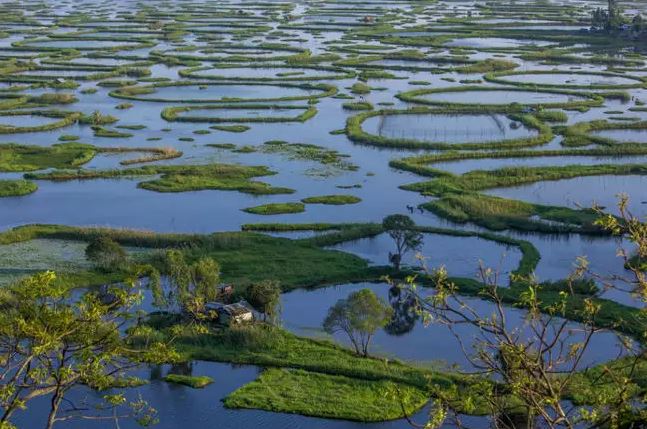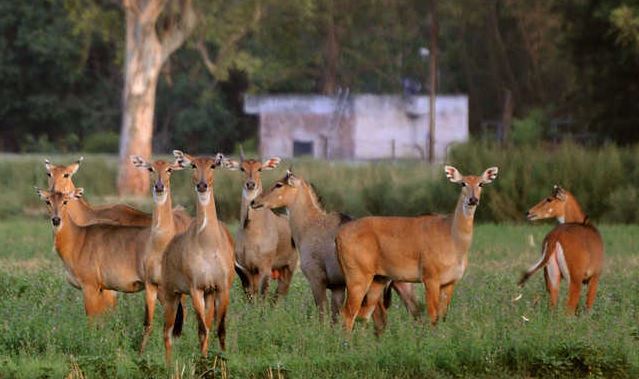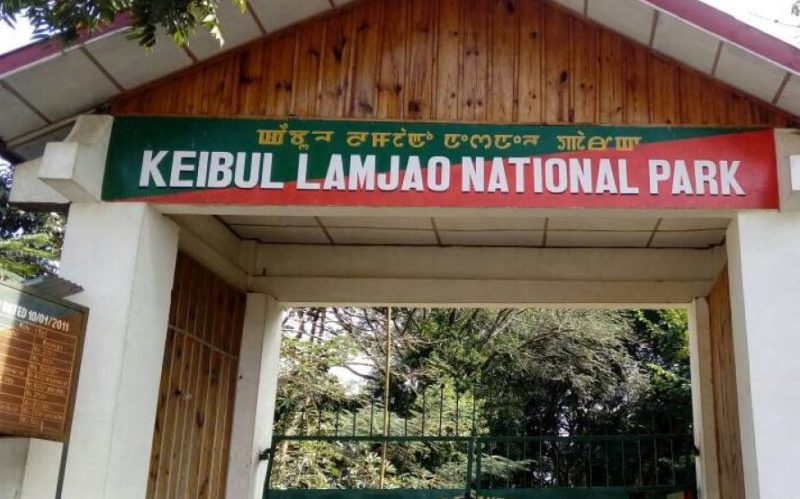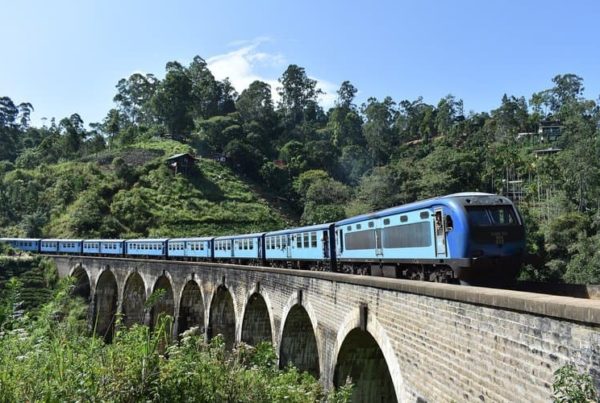In the far east of northern India lies a place so hidden, only a few have heard about it. A realm of waterways and floating parks. Indeed, a unique environment builds for the people who live around it and the wild animals that share it.
The state of Manipur is a land of steep mountains surrounding vast flat plains where people have lived for a thousand years. Not far from Manipur’s capital Imphal has Manipur’s best-kept secret. Almost as big as the country of Maldives, LOKTAK LAKE is the largest freshwater lake in North-East India.

What’s so special about it?
Fish forms a major source of Manipur’s diet and the lake is a primary source of fish in the surrounding villages. Phumdi is a floating bio-mass, consisting of soil and organic matter at various stages of decomposition. While on the southern side, it has made one of the largest floating meadows of the planet. This habitat is so close to the people of Manipur, that they have a special name for it Keibul Lamjao. The vast land where Tigers gather.
This place is full of flora and fauna of diverse species living all together in harmony. To be numerically right, there are 233 types of aquatic plants, more than 400 species of animals and about a 100 varied species of birds. Keibul Lamjao is the home to endangered brow-antlered deer also known as Sangai.
The Sangai, this endangered deer sub-species and the state animal of Manipur is believed to be the binding soul between humans and nature. They are well adapted to walk on the floating landmass. They were declared extinct in the year 1951 but later were re-discovered in this natural habitat. To protect this fragile ecosystem together with its inhabitants, Keibul Lamjao was declared a wildlife sanctuary in the year 1955, later upgraded to a national park after in the year 1977. “Making it the only floating National Park in the world.”

Keibul Lamjao National Park
A beautiful place, located in the Bishnupur district of the state of Manipur. The park is home to the endangered brow-antlered deer or Sangai. Keibul Lamjao is most likely the world’s only ‘floating national park comprising 1.5m deep floating vegetation in the 40 sq.km. of overgrown wetlands. The fauna in the park is likewise rare and extraordinary.
Since the ages, Manipur has been ecologically preserved and Loktak Lake is famous all over the world not only because of the pristine ecological environment but also the world’s only floating lake. It now attracts the tourist, conservationist and wildlife enthusiast from all across the globe. The lake not only consists of The Keibul Lamjao – the world’s only floating national park but at the same time is also a natural habitat for the state animal of Manipur – Sangai Deer.
Besides a marine national park, this lake also has the world’s only floating school and floating resort which are all preserved & curated by the government. Therefore, the entire area is well known for its reserved and pristine ecology, calm & serene atmosphere and picturesque sightseeing.

Time to visit Loktak Lake:
It’s perfectly fine no matter which season you want to visit because of the heavy rainfall this place has a pleasant climate round the year. The temperature here varies between 20 – 25 degrees but winters are pretty much cold in the hills so proper clothing must be carried along the trip. But still, if you are planning to explore this place from October to April is a good time in the year.
How to reach:
By Air:
Manipur’s capital city Imphal has the nearest airport from Lotak Lake distancing just 48km and cabs are also available for the visitors.
By Rail:
Dimapur is the nearest railway station which is about 215 km from Imphal.
By Road:
Moirang lies in the district of Bishnupur is connected to Imphal via NH53 and public transport and cars are also available between the routes of Imphal to Moirang.
Thickly covered with the 10-feet-tall grass, the national park is the perfect refuge for many species. The single isolated population of Sangai is vulnerable. From 14 to number in 1975, the digit of Sangai has now increased to 260 during the last census in 2016. Sangai has made a remarkable comeback from the state of extinction with the support of villagers and forest department.
Kaibul Lamjao national park is one of the main tourism sources of Manipur. As the number of visitors is increasing, hence it has increased the economy of the village creating several job opportunities.
Pictures Credit: timesofindia, YouTube






